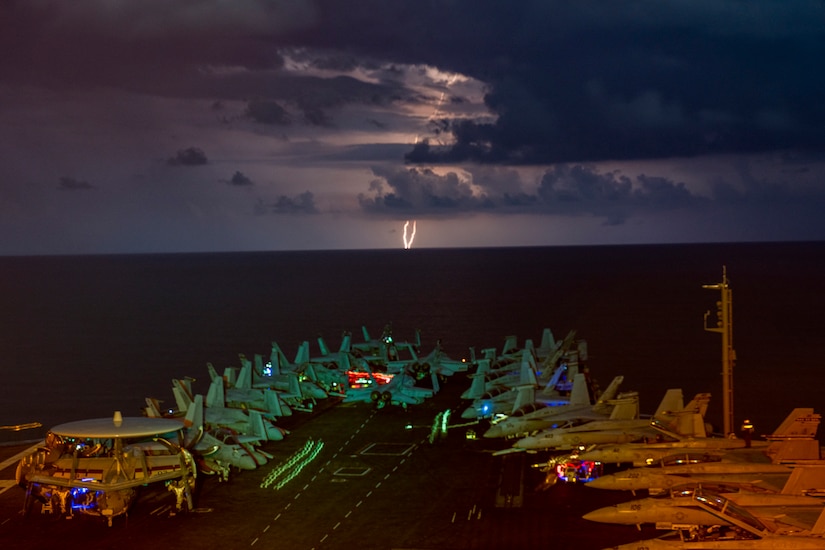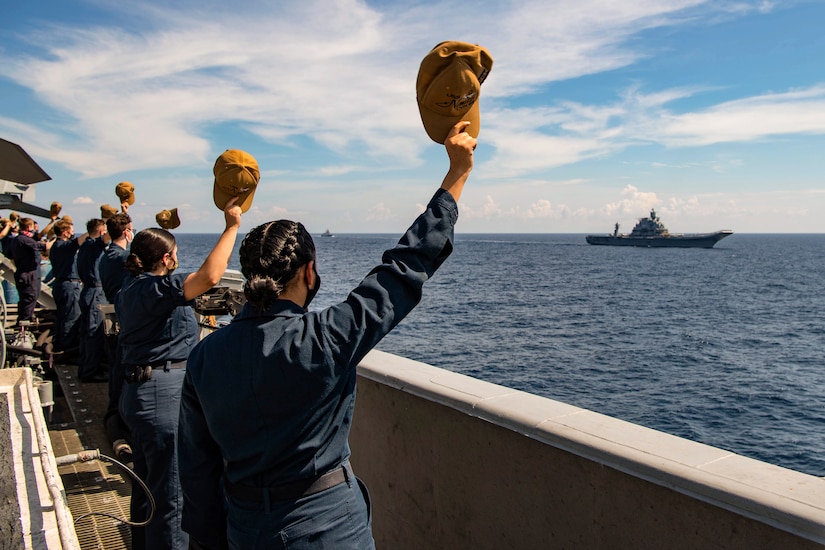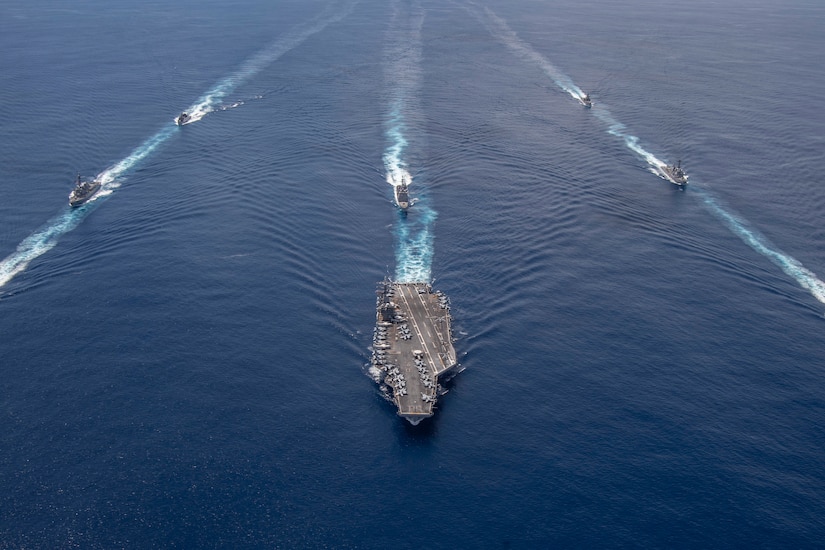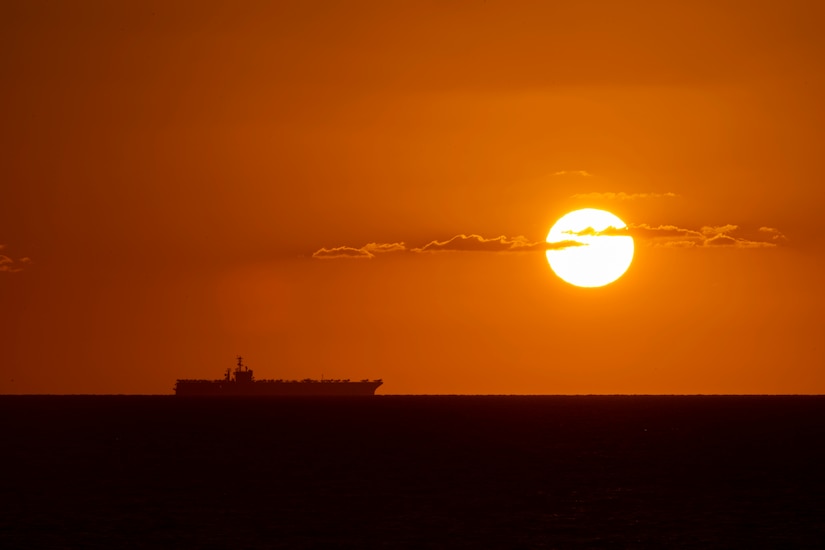Feb. 25, 2021 | , DOD News
Secretary of Defense Lloyd J. Austin III flew out to the aircraft carrier USS Nimitz off the coast of California to thank the crew for a record-setting deployment.

The Nimitz Carrier Strike Group is returning after operations in U.S. Indo-Pacific Command and U.S. Central Command areas of responsibility. It was the first carrier strike group to deploy under COVID-19 protocols. By the time the carrier strike group reaches home, the sailors and Marines aboard will have been gone for 321 days.
The Nimitz, the cruiser USS Princeton, and the destroyers USS Sterett and USS Ralph Johnson made up the group.
"You've just demonstrated incredible professionalism, resilience and focus," Austin told the crew over the ship-wide public address system. "It's been very impressive."
The group provided carrier support in the Persian Gulf in support of Centcom during a particularly tense time with Iran. The group also participated in maritime exercise Malabar 2020 alongside Indian, Australian and Japanese ships. The carrier strike group also participated in dual-carrier operations with the USS Theodore Roosevelt and USS Ronald Reagan carrier strike groups. The group also operated in the South China Sea, as well.

Austin praised the group for these efforts. "You've sent a clear message about America's resolve," he told the crew. "Any potential adversary out there — in this ocean or any other ocean — has to know when they look at what you accomplished, that the United States takes very seriously our security commitments around the world."
He thanked the sailors for working with key allies and partners across the U.S. combatant commands.
The Nimitz Carrier Strike Group had the longest deployment since the Vietnam War. It was lengthened by COVID-19 protocols that called for a quarantine before departing and the elimination of port calls during the deployment. The Navy aims for deployments to be roughly six months. The Nimitz group will be away from family and friends almost twice that.
"I don't want deployments this long to be the norm," the secretary said. "And so, we need to take a hard look at that, but you handled it very, very well. You led. You took care of each other in the midst of a pandemic, and you were a team."

In a news conference with Pentagon reporters on the hangar deck, Austin thanked families in particular. "Their families have been very, very supportive as well," he said. "And I want to make sure I give them a shout out again, and provide our thanks for their sacrifices."
The Nimitz was on its way home from the Centcom area of responsibility when events in the region necessitated its return. Events such as these happen. He noted the year-long deployments to Iraq and Afghanistan that stretched to 18 months, as an example.
"I understand the stress that, that can place on families," he said. "So as secretary, what I want to do is make sure that … going forward, we do everything we can to minimize that kind of stress."

That means taking care of equipment, sure, but really ensuring that service members and their families are taken care of. "We're going to continue to learn," he said. "We're going to continue to make sure we have the resources. [We're going to ensure] that we're doing the right things to pace ourselves going forward. Because I really think this is important."
Overall, the carrier strike group steamed more than 87,300 nautical miles during its deployment. The carrier launched 10,185 sorties totaling 23,410 flight hours logged.







No comments:
Post a Comment